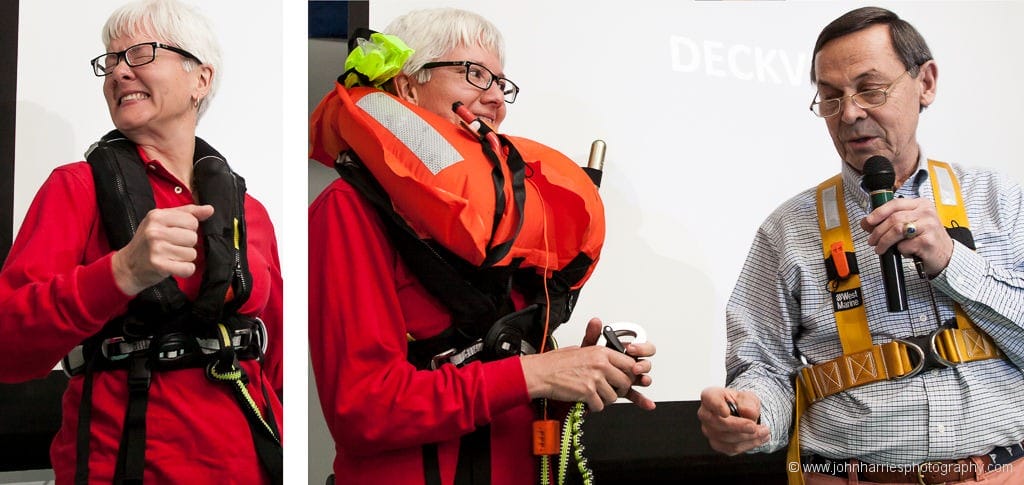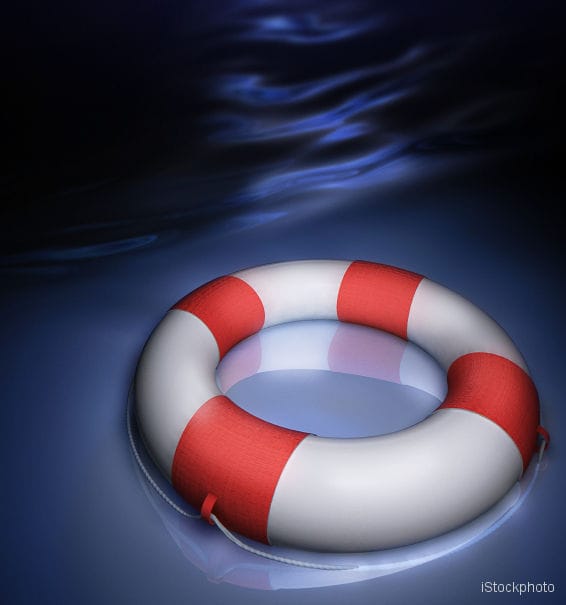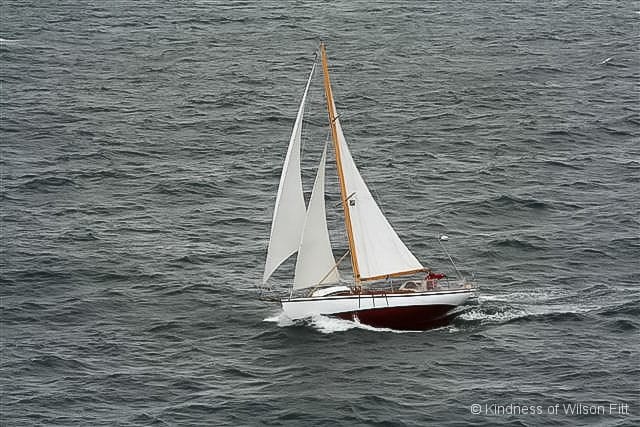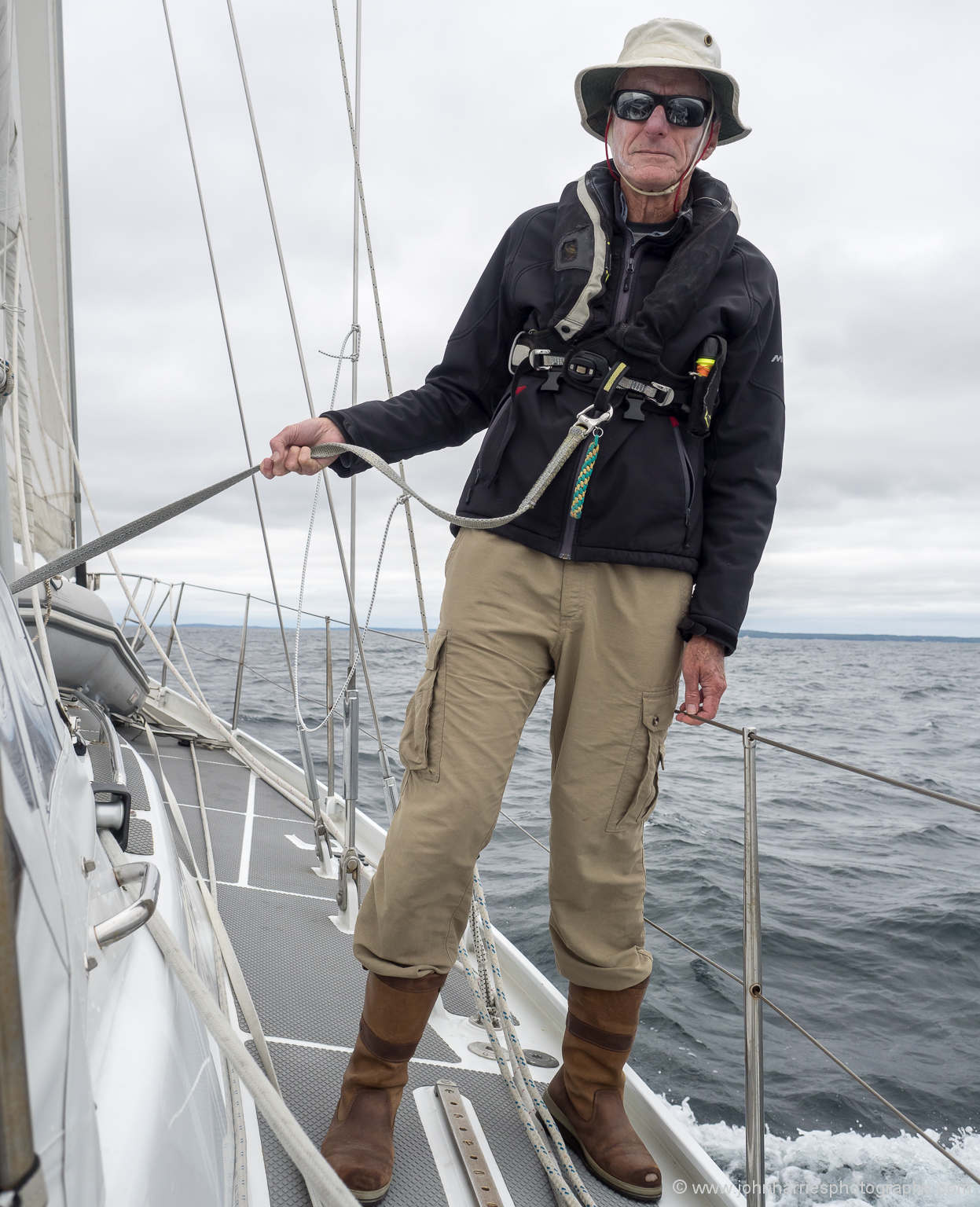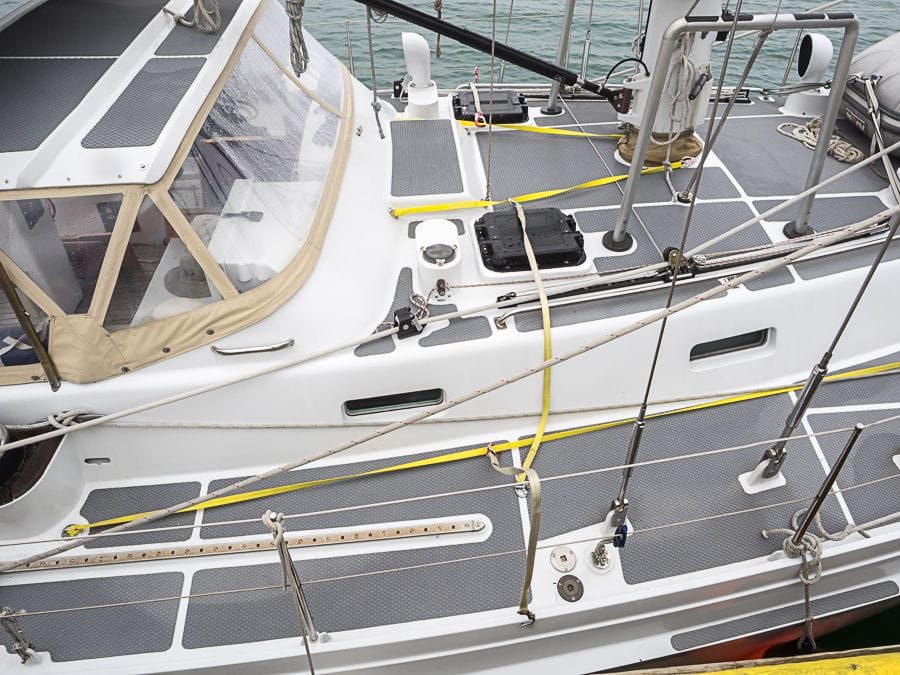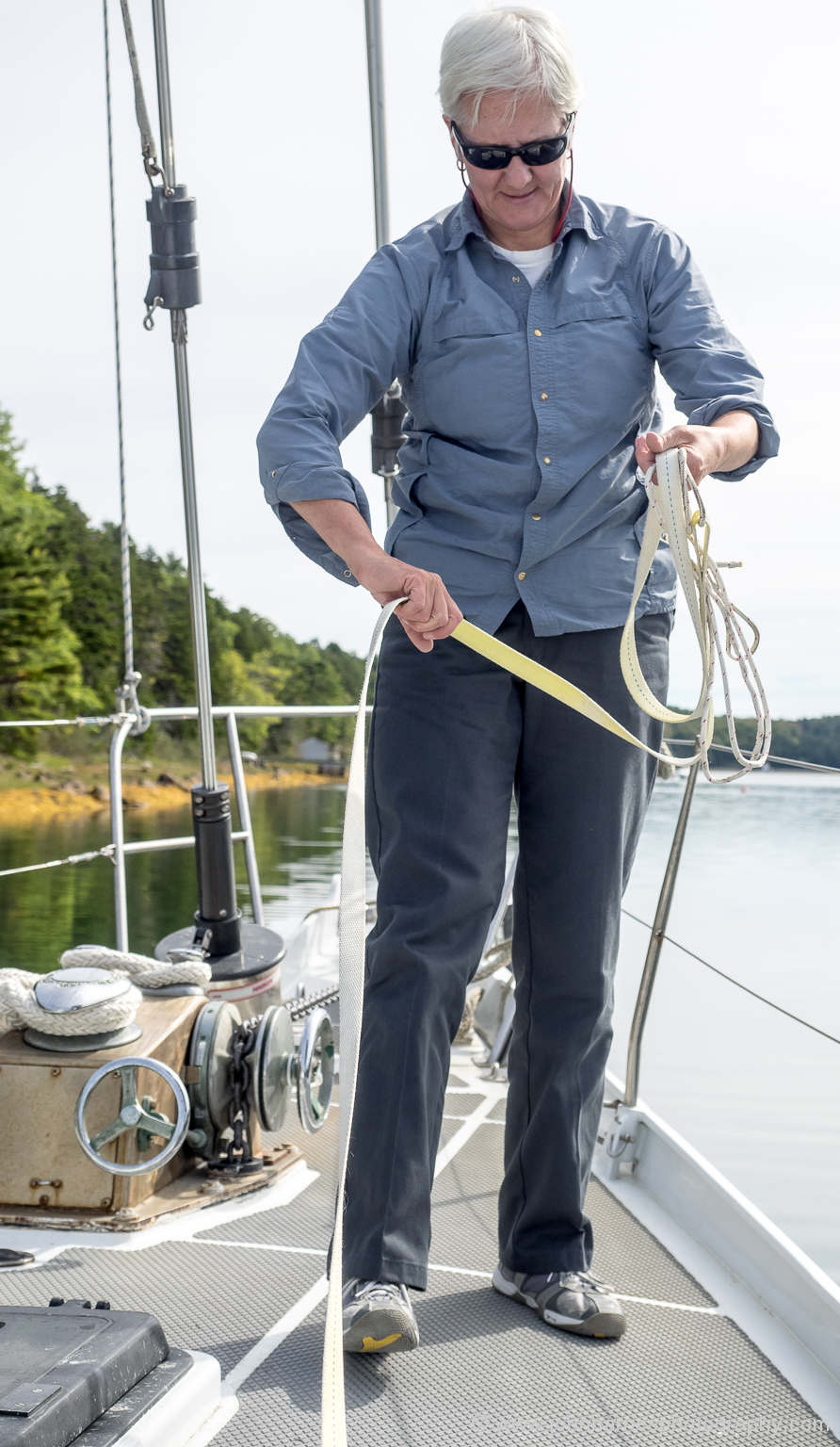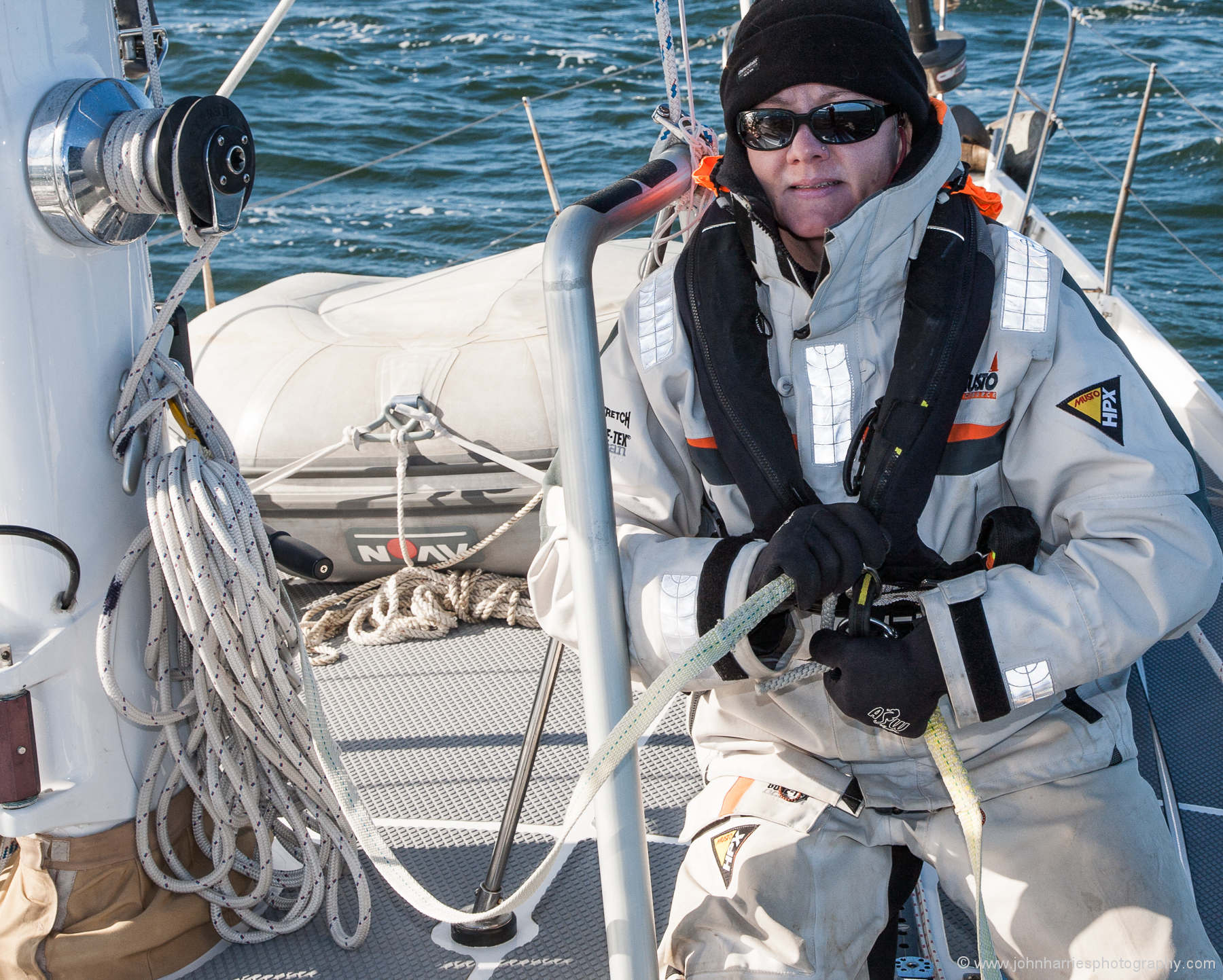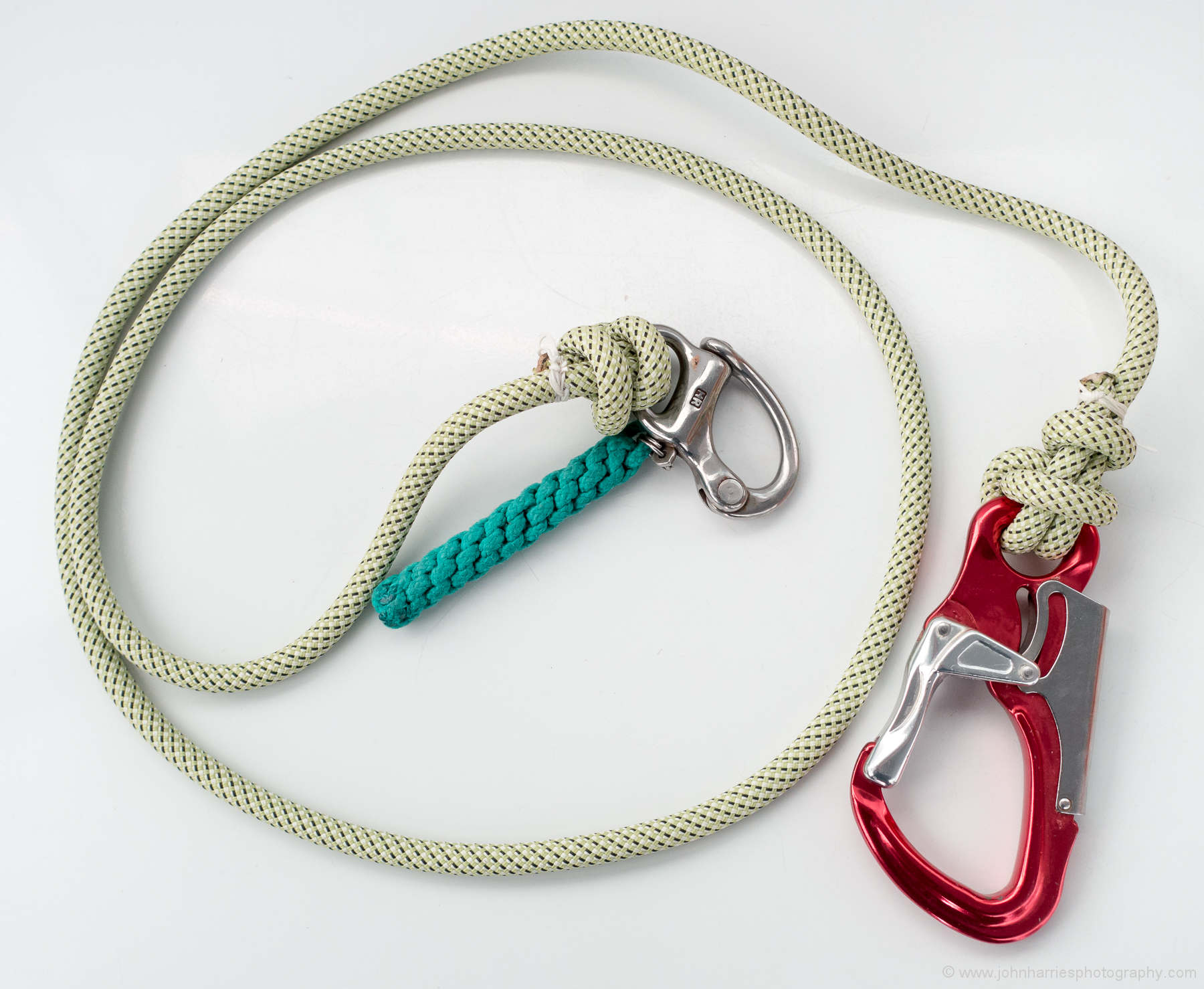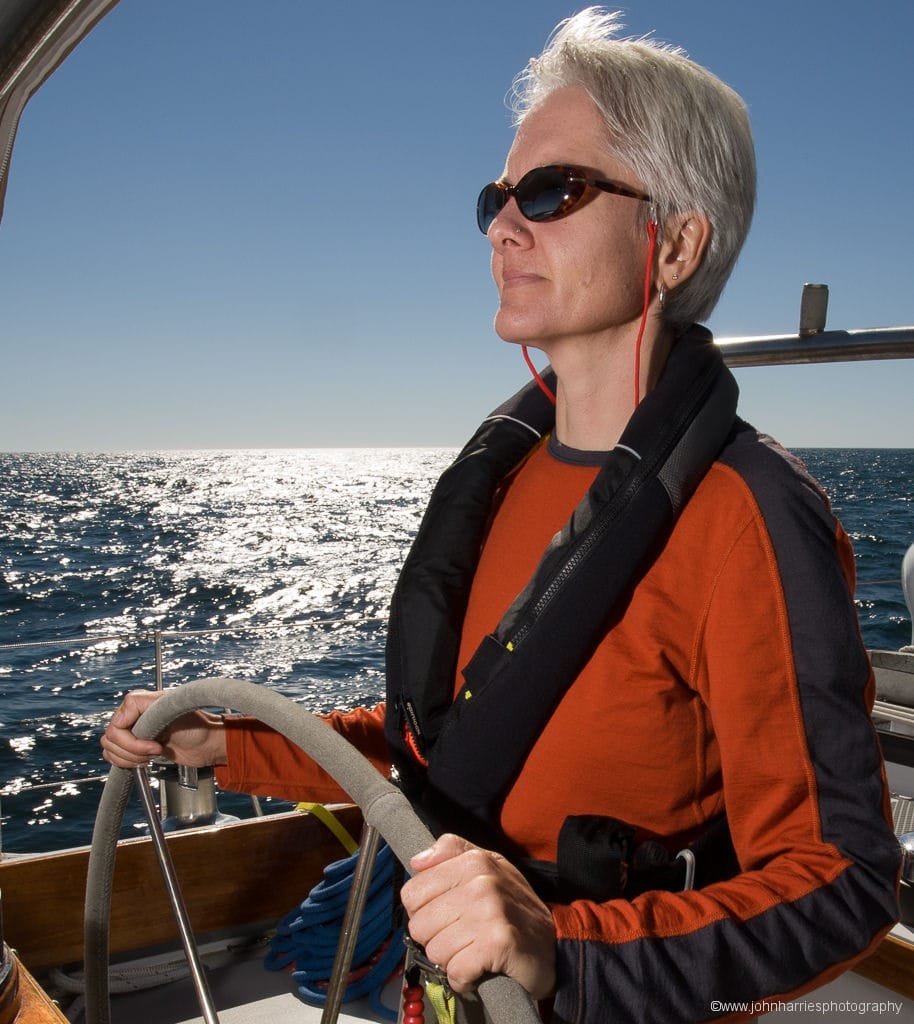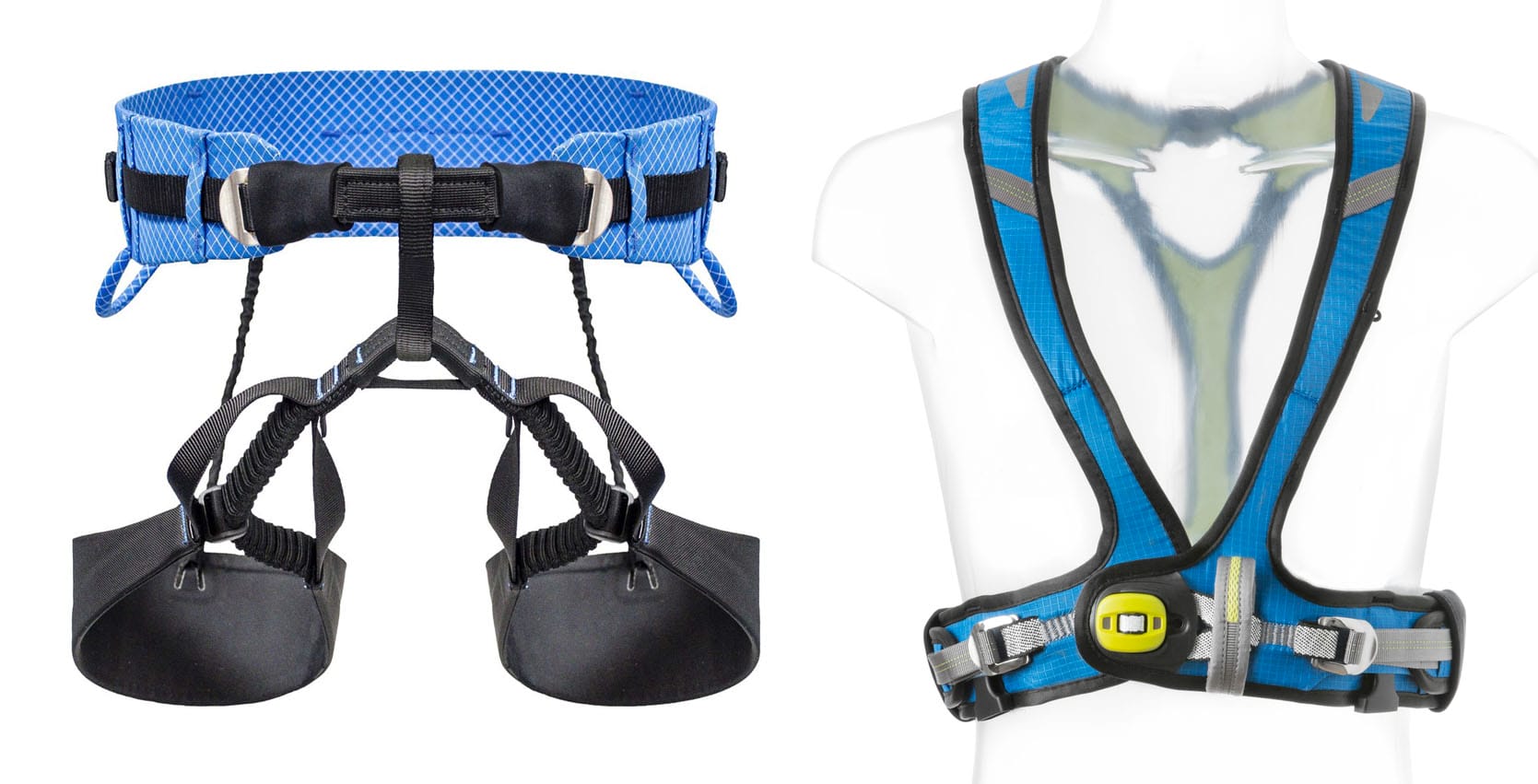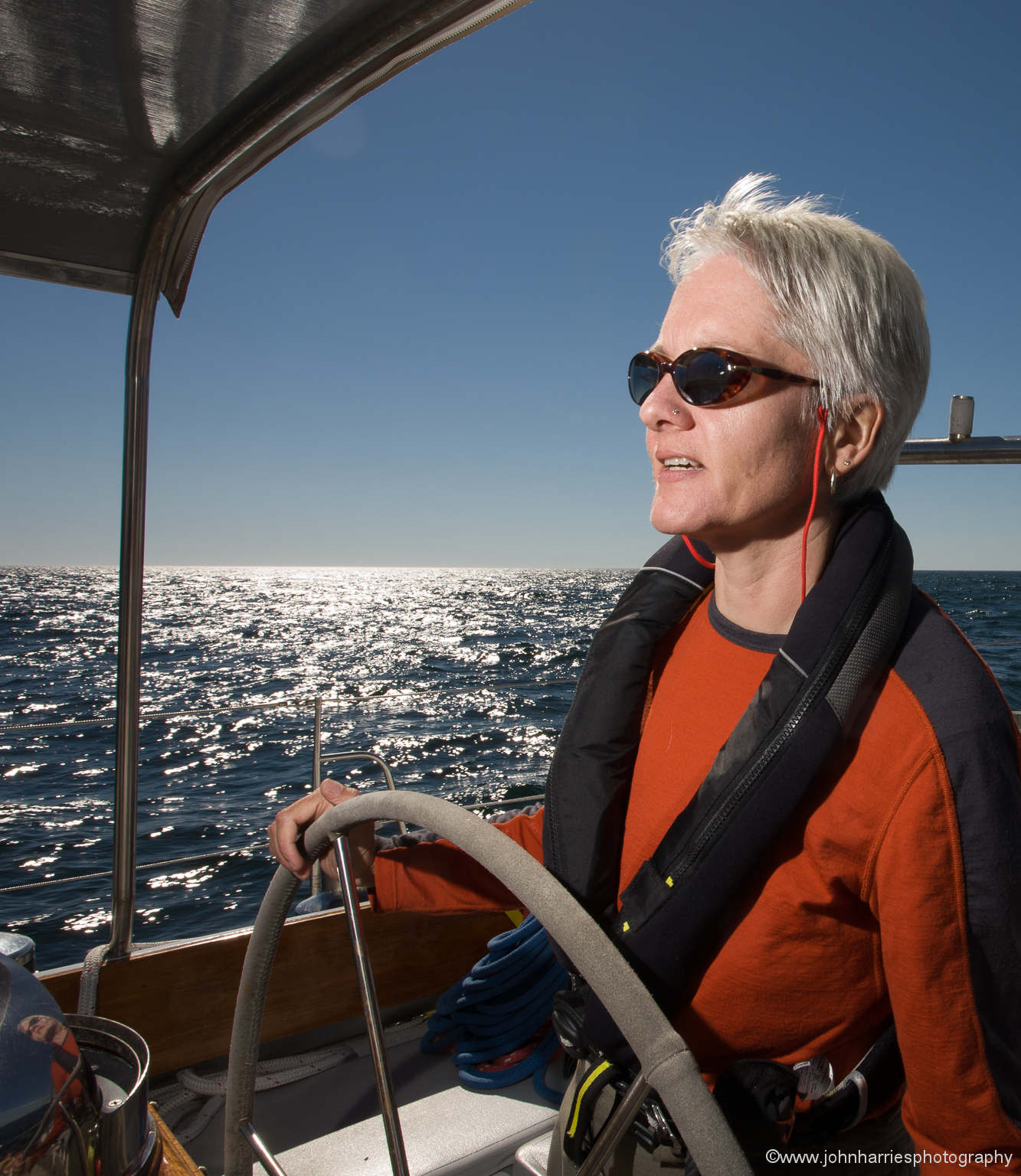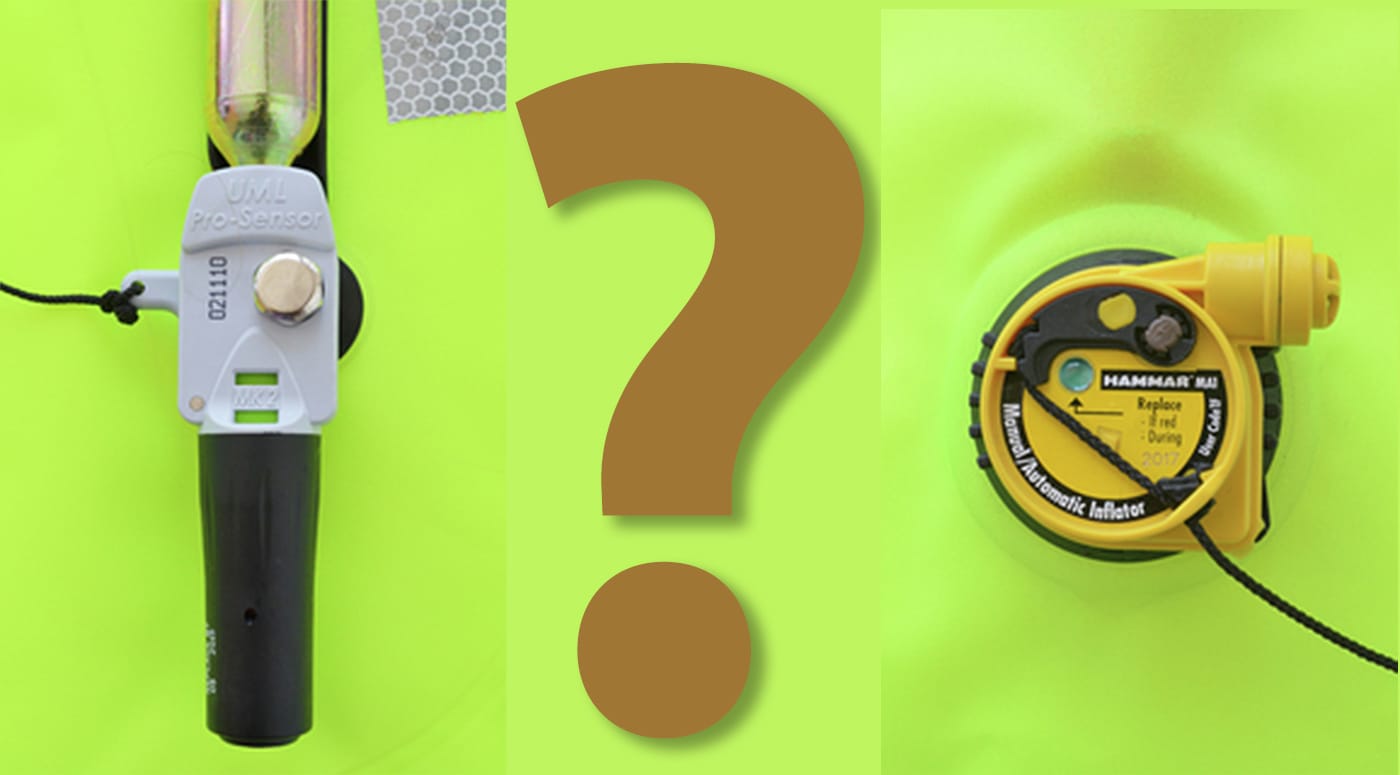Online Book: Crew Overboard Prevention & Recovery
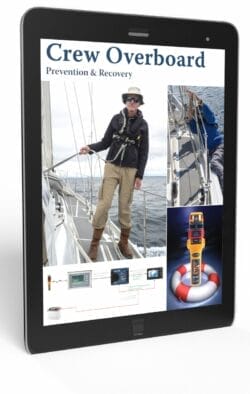
If you fall overboard from a short-handed boat, you are probably not going to be rescued. Tips and procedures that will help keep you and your loved ones on the boat.
And now, notwithstanding the above, includes chapters on recovery.
Click for TOC or scroll down for details
Articles in this topic:
- We Should Focus On Staying Aboard, Not Recovery
- The Risks of Falling Overboard at Sea
- The Real Reason to Use a Harness and Tether
- Staying Attached To The Boat
- The Risks Of Sidedeck Jacklines Quantified
- Flawed Jackline Systems Revisited
- Better Jacklines
- Banishing Sidedeck Jacklines Forever
- Limiting COB Drag Risk On A Smaller Boat
- Jacklines: Materials, Fabrication and Installation
- The Right Tethers To Keep Us Aboard—Part 1, A Mix
- The Right Tethers To Keep Us Aboard—Part 2, Construction and Hardware
- Harnesses and Lifejackets and How to Use Them
- Crew Overboard Prevention—Use of Climbing Harnesses
- Should We Wear Lifejackets or Harnesses, Both, Neither?
- Which Lifejacket Auto-Inflator Should We Select?
- Crew Overboard Recovery, Is The Quick Stop Bogus?
- Crew Overboard Recovery—Our Replacement For Quick Stop
-
We Should Focus On Staying Aboard, Not Recovery
37 CommentsReading Time: 2 minutesFreeRead more: We Should Focus On Staying Aboard, Not RecoveryThere are countless articles, books and courses that focus on recovering a crew overboard, but what really matters to the short-handed crew offshore is making as sure as humanly possible that a crew overboard situation never happens in the first place—we need prevention, not cure. This chapter introduces this Online Book and that basic concept.
-
The Risks of Falling Overboard at Sea
67 CommentsReading Time: 3 minutesMembersRead more: The Risks of Falling Overboard at SeaBefore we can come up with good and effective crew overboard prevention systems, we need to think about and clearly understand the risks we are dealing with, which I examine in this chapter.
-
The Real Reason to Use a Harness and Tether
40 CommentsReading Time: 2 minutesMembersRead more: The Real Reason to Use a Harness and TetherWe have written a lot about gear in our ongoing Crew Overboard Prevention Online Book, but all the gear in the world won’t keep you safe if you don’t heed this tip.
-
Staying Attached To The Boat
63 CommentsReading Time: 3 minutesMembersRead more: Staying Attached To The BoatThe key to crew overboard prevention is never losing contact with the boat. In this chapter I take you through an easy-to-use (with a little practice) system, which we have evolved over 20 years sailing offshore short-handed on our boat, that will enable you to stay clipped on at all times and still have the mobility and reach to sail your boat properly.
-
The Risks Of Sidedeck Jacklines Quantified
42 CommentsReading Time: 12 minutesMembersRead more: The Risks Of Sidedeck Jacklines QuantifiedDespite the well-documented risks of being dragged after falling overboard, many (probably most) offshore sailboats are still using sidedeck jacklines, raising the key question: Is that solution worse than nothing? At last we have numbers to help each of us make that critical decision.
-
Flawed Jackline Systems Revisited
13 CommentsReading Time: 10 minutesMembersRead more: Flawed Jackline Systems RevisitedIn the last chapter we examined the risks of being dragged and particularly tether tension. Now let’s relate that to the jackline systems we see out there in use.
-
Better Jacklines
17 CommentsReading Time: 6 minutesMembersRead more: Better JacklinesIn the last two chapters we discovered that the jackline systems most of us use for COB prevention are pretty much useless. Now we are moving on to what to do about that—the good stuff.
-
Banishing Sidedeck Jacklines Forever
38 CommentsReading Time: 5 minutesFreeRead more: Banishing Sidedeck Jacklines ForeverWe have shown that sidedeck jacklines are deeply flawed and may even be more dangerous than no jacklines at all, due to drag risk and the false sense of security they confer. But can we get rid of them and still work our boats efficiently? Yes, we can! Here’s how, with video proof.
-
Limiting COB Drag Risk On A Smaller Boat
0 CommentsReading Time: 10 minutesMembersRead more: Limiting COB Drag Risk On A Smaller BoatAs boats get smaller, building a system gets more difficult and more compromises must be made, but it is doable.
-
Jacklines: Materials, Fabrication and Installation
105 CommentsReading Time: 11 minutesMembersRead more: Jacklines: Materials, Fabrication and InstallationAre you making or ordering jacklines to keep your crew safely on the boat? John takes a deep dive into the right material, stitching, and attachment techniques. This is truly a project where the details matter.
-
The Right Tethers To Keep Us Aboard—Part 1, A Mix
82 CommentsReading Time: 7 minutesMembersRead more: The Right Tethers To Keep Us Aboard—Part 1, A MixOur project to improve crew overboard prevention systems has been a long and winding three-year-to-traverse road. But we are nearly there. Here’s the first of two chapters on tethers.
-
The Right Tethers To Keep Us Aboard—Part 2, Construction and Hardware
84 CommentsReading Time: 5 minutesMembersRead more: The Right Tethers To Keep Us Aboard—Part 2, Construction and HardwareIn the last chapter, John wrote about the two different types of tethers he and Phyllis use on Morgan’s Cloud. In this chapter he follows up with the details of how they build each type.
-
Harnesses and Lifejackets and How to Use Them
73 CommentsReading Time: 4 minutesMembersRead more: Harnesses and Lifejackets and How to Use ThemYour harness, its fit, and how you use it are among the most important parts of staying safe on a boat offshore. In this chapter I share what we have learned in 140,000 miles of offshore sailing, most of it short-handed, about harnesses and lifejackets, the features to look for, and their use.
-
Crew Overboard Prevention—Use of Climbing Harnesses
36 CommentsReading Time: 2 minutesMembersRead more: Crew Overboard Prevention—Use of Climbing HarnessesWhat about using a climbing harness with tether for Crew Overboard Prevention (COB)? John takes a look at this oft-suggested idea.
-
Should We Wear Lifejackets or Harnesses, Both, Neither?
44 CommentsReading Time: 7 minutesMembersRead more: Should We Wear Lifejackets or Harnesses, Both, Neither?Can we stay safe just by following generally-accepted rules like always wear a lifejacket? John doesn’t think so and takes a deep dive into the issues we need to think about.
-
Which Lifejacket Auto-Inflator Should We Select?
43 CommentsReading Time: 4 minutesMembersRead more: Which Lifejacket Auto-Inflator Should We Select?Assuming that we have decided to buy and use auto-inflated lifejackets, we have yet another decision to make: Which of the two available activation devices should we select, hydrostatic or dissolved tablet? John interviews an expert and makes a selection.
-
Crew Overboard Recovery, Is The Quick Stop Bogus?
52 CommentsReading Time: 6 minutesMembersRead more: Crew Overboard Recovery, Is The Quick Stop Bogus?The Quick Stop crew overboard recovery maneuver has become the standard taught in most every safety at sea seminar. But how effective is the method really likely to be, particularly for short-handed crews offshore? John takes a look.
-
Crew Overboard Recovery—Our Replacement For Quick Stop
71 CommentsReading Time: 7 minutesMembersRead more: Crew Overboard Recovery—Our Replacement For Quick StopThe availability of comparatively inexpensive, and proven effective, AIS/DSC COB beacons means that all of us must think long and hard about what changes we need to make in our Crew Overboard (COB) procedures. John and Phyllis share the recovery technique they will be practicing in future.

